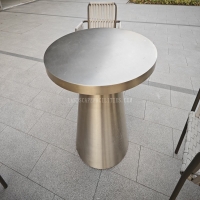Welcome to the website for landscape facilities products and knowledge.
How does the design of the trash can impact its resistance to mold and mildew?
The design of a trash can plays a crucial role in its ability to resist mold and mildew growth. Factors such as material selection, ventilation, and ease of cleaning significantly impact hygiene and longevity.
1. Material Matters: Trash cans made from antimicrobial plastics or stainless steel are less prone to mold and mildew. These materials resist moisture absorption, reducing the chances of bacterial buildup.
2. Ventilation Features: Designs with built-in ventilation holes or breathable liners allow air circulation, preventing the damp conditions that foster mold growth.
3. Smooth Surfaces & Seamless Construction: Cans with smooth interiors and minimal crevices are easier to clean, leaving no hidden spots for mold to thrive.
4. Lid Design: Tight-sealing lids can trap moisture, while open or pedal-operated designs promote airflow. Choosing the right lid depends on usage and environment.
5. Easy Cleaning Access: Removable liners, dishwasher-safe components, and detachable parts simplify deep cleaning, ensuring mold and mildew are kept at bay.
By prioritizing these design elements, manufacturers and consumers can select trash cans that maintain cleanliness and durability over time.
Related search:

Recommendation
Outdoor Metal Table - Classic Outdoor Furniture, Stainless Steel Table, Durable and Reliable